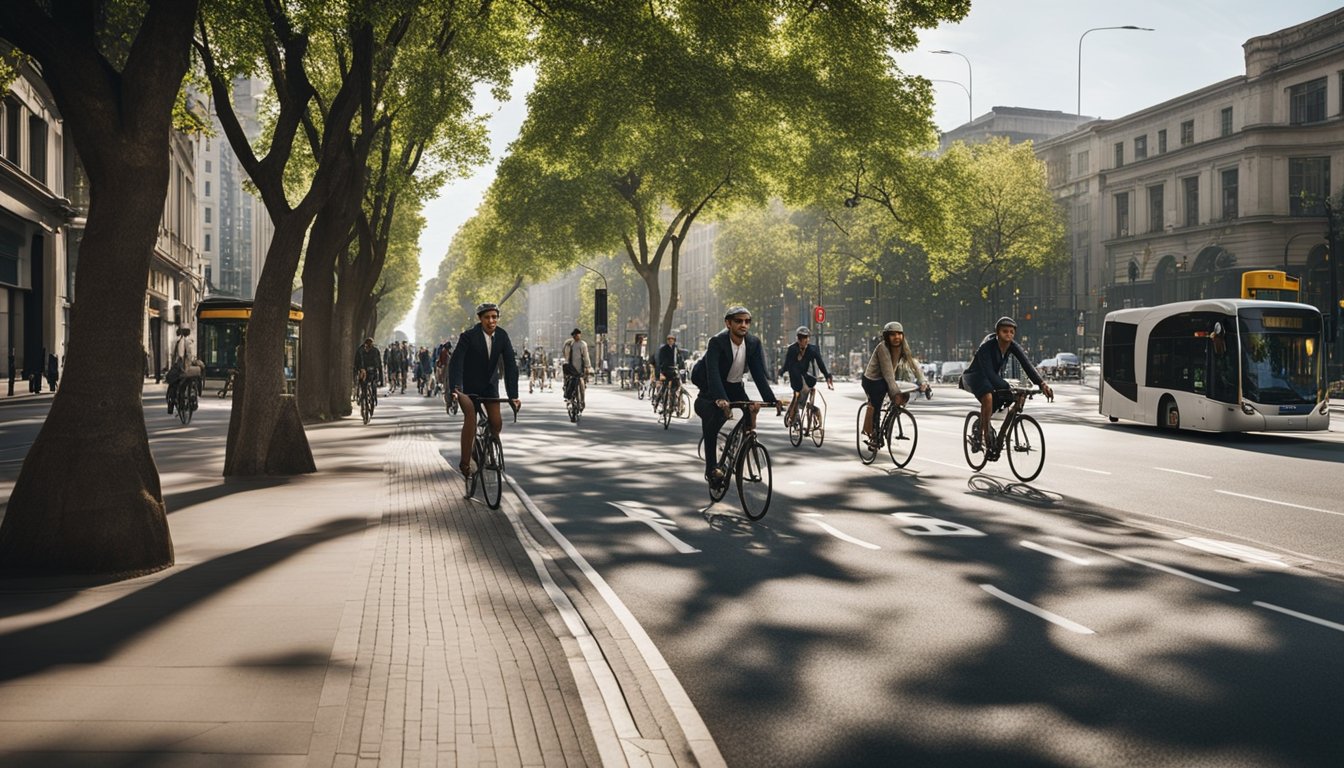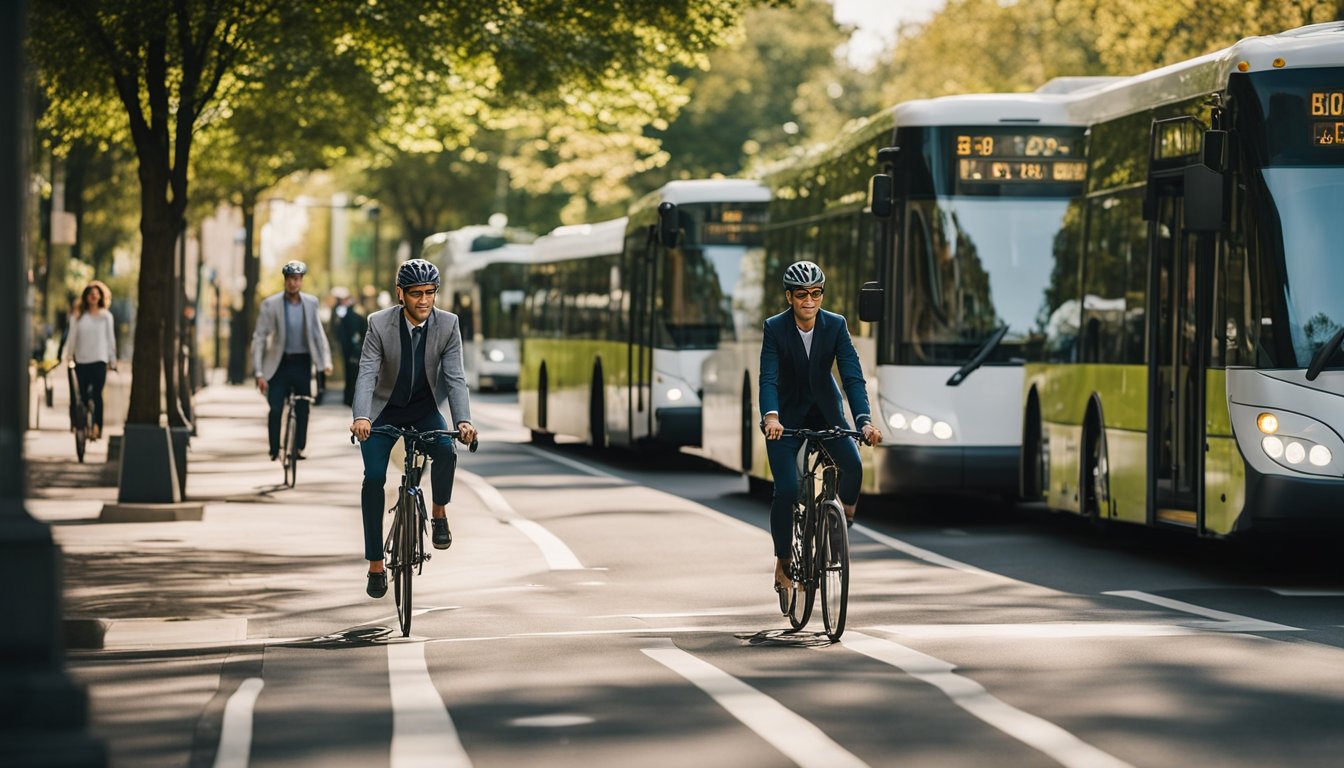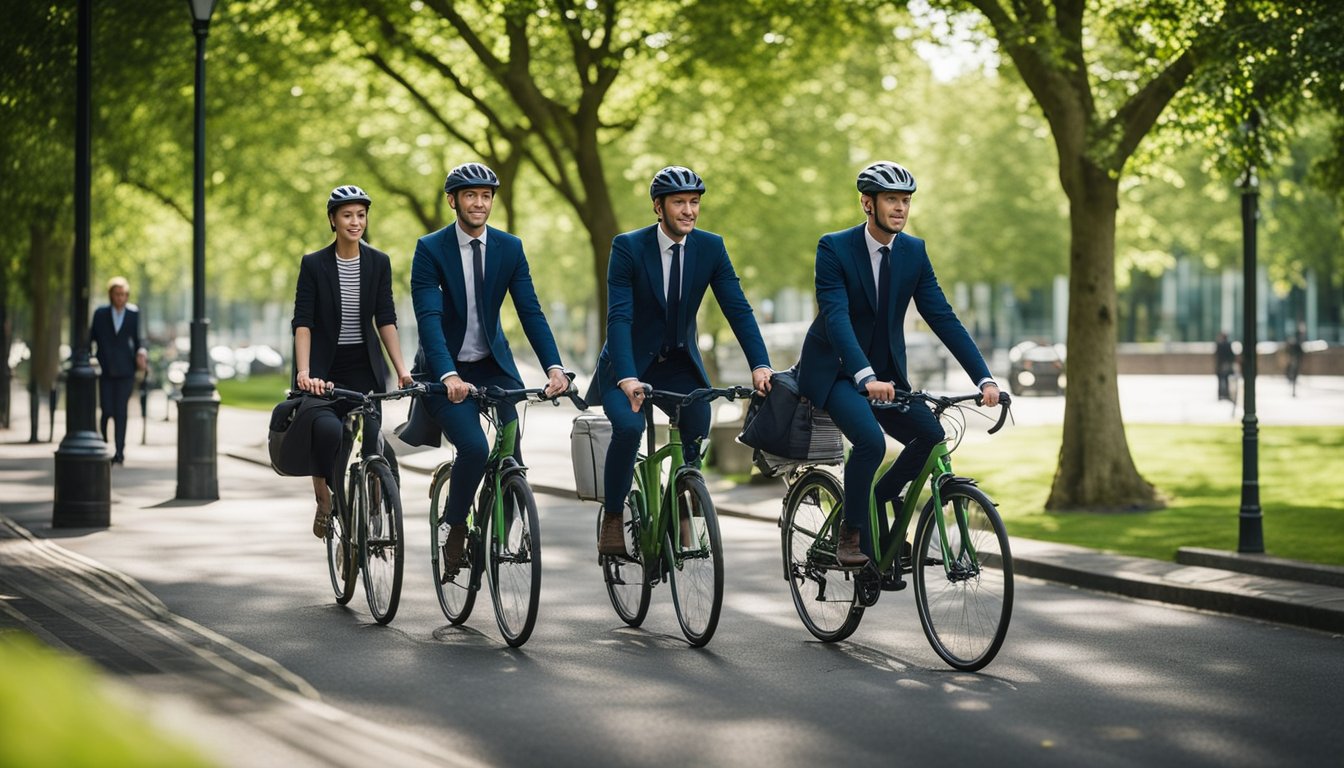Late updated: 13 Aug 2024 11:08
Written by: Amber Collins
Green Commuting Tips For UK Employees: Sustainable Travel Solutions
In today's fast-paced world, commuting plays a significant role in our daily routines, affecting both our health and the environment. As UK employees, we have a unique opportunity to embrace green commuting techniques that not only reduce our carbon footprint but also promote a healthier lifestyle. From cycling to work through the Cycle to Work scheme to exploring public transport options and car-sharing initiatives, the choices we make can have a lasting impact on our planet and our well-being.

By adopting sustainable commuting practices, we can contribute to a cleaner, greener future while also benefiting from cost savings and improved physical health. Salary sacrifice arrangements, as highlighted by schemes like the Green Commute Initiative, offer significant financial benefits, making green commuting more accessible and attractive. Whether it's a short ride on a bike or leveraging flexible membership options for electric vehicles, there is a multitude of ways to make our daily commute more sustainable.
Let's explore practical tips and real-world examples to make your transition to green commuting as smooth and effective as possible. Together, we can lead the way in reducing the environmental impact of our work journeys.
Key Takeaways
- Green commuting offers financial and health benefits.
- Sustainable practices can significantly reduce our carbon footprint.
- Various schemes and options make adopting green commuting easier.
Understanding the Benefits of Green Commuting
Switching to green commuting has significant advantages, such as reducing carbon emissions and enhancing employee wellbeing, all while supporting corporate sustainability goals.
Reducing Emissions and Tackling Climate Change
Green commuting directly impacts the reduction of carbon emissions. By opting for electric vehicles, cycling, or public transport, employees contribute less to greenhouse gas emissions. Transport is a major contributor to UK carbon emissions; thus, reducing commuter reliance on conventional vehicles can make a notable difference in achieving net zero targets.
Government support for sustainable travel options — like reduced costs for electric bikes — further encourages these shifts. These measures play a crucial role in meeting the UK’s climate commitments and ensuring a healthier environment for us all.
Enhancing Employee Wellbeing and Productivity
One of the often-overlooked benefits is the positive effect on employee wellbeing. Engaging in active commuting options such as cycling or walking can improve physical health and mental wellbeing. Exercise before or after work can reduce stress and result in happier, more fulfilled employees.
Access to green commuting options can also lead to fewer delays and less commuting time, which ultimately boosts productivity. With healthier, more efficient commuting methods, employees are likely to demonstrate increased focus and creativity at work.
Achieving Corporate Sustainability Goals
For employers, promoting green commuting is an essential part of corporate sustainability strategies. By incorporating initiatives such as carpooling schemes, support for electric vehicle charging, and flexible working hours, companies can encourage more sustainable travel among their workforce.
These efforts show a corporate commitment to environmental stewardship, which can enhance the company’s reputation and attract environmentally conscious talent. Moreover, organisations may experience cost savings through reduced need for parking spaces and lower health-related absenteeism.
Employers can also leverage government incentives designed to support green business practices. Through these combined efforts, businesses can make significant strides towards sustainability while benefiting their employees and the broader community.
Implementing Green Commuting Practices

Implementing green commuting practices enhances employee satisfaction and reduces transport emissions. By adopting accessible and sustainable transport options, we can support both eco-friendly travel and healthier work environments.
Making Public Transport and Cycling Accessible
Making public transport and cycling accessible involves improving infrastructure and providing financial incentives. Employers should collaborate with local authorities to ensure adequate bus and train services near the workplace. We should also consider subsidising public transport passes, making it financially attractive for employees.
For cycling, it's crucial to provide secure bike storage, showers, and lockers. This encourages employees to cycle without concern for their comfort or the security of their bikes. Encouraging e-bike use can further make cycling feasible for long distances and hilly commutes, reducing reliance on cars.
Innovations in Cycle to Work Schemes
Innovations in the Cycle to Work scheme can drastically enhance its effectiveness. Employers should increase the salary sacrifice limit, allowing employees to purchase higher-quality, long-lasting bikes. Partnering with registered bike shops can provide employees with exclusive deals and professional maintenance services.
Introducing bike packages that include essentials such as helmets, lights, and locks can make the scheme more comprehensive. Some companies are exploring subscription models for bikes and accessories, which could include regular upgrades and replacements, ensuring employees always have access to safe and reliable cycling gear.
Supporting Active Travel and Flexible Working Arrangements
Supporting active travel means promoting walking, cycling, and the use of scooters. Employers can create incentives for employees who choose these sustainable travel options by offering rewards programmes. Collaborations with nearby businesses to create carpooling networks can reduce individual car usage.
Flexible working arrangements, including remote work and adjustable hours, can lessen peak-hour congestion. This helps improve air quality and reduces road transport emissions. By implementing flexible working policies, we can support employees' mobility needs while enhancing their work-life balance. Employers can also consider compressed workweeks to reduce the overall number of commuting days, further decreasing the transport-related carbon footprint.
Frequently Asked Questions

We address common queries about eco-friendly commuting options and incentives available for UK employees. These insights can guide you in making more sustainable travel choices.
What are the most environmentally friendly modes of transport for getting to work?
Cycling, walking, and using electric vehicles are some of the greenest ways to commute. Public transport, such as trains and buses, also significantly reduces individual carbon footprints compared to driving alone.
How can I reduce my carbon footprint when travelling to my workplace?
Opt for public transport, cycle, walk, or carpool when possible. If you drive, consider an electric or hybrid vehicle. Flexible work schedules can help you avoid peak traffic, reducing both emissions and stress.
What incentives are available for eco-friendly commuting in the UK?
UK businesses can offer incentives like subsidised public transport passes, cycle-to-work schemes, and financial support for carpooling. These initiatives can make sustainable commuting more accessible and appealing to employees.
Can cycling be a practical option for daily commutes in urban areas?
Yes, cycling can be a very effective and efficient mode of transport in cities. It helps reduce traffic congestion and emissions. Many urban areas are investing in better cycling infrastructure, including dedicated lanes and bike sharing programmes.
What role do carpooling and ride-sharing play in sustainable commuting?
Carpooling and ride-sharing significantly cut down the number of vehicles on the road, decreasing traffic and emissions. These practices also reduce commuting costs and foster a sense of community among employees.
How can public transport be utilised to make commuting more sustainable?
Public transport, such as buses, trains, and trams, offers a lower-emission alternative to individual car use. Using public transport helps to decrease the number of vehicles on the road, which results in less traffic congestion and environmental pollution.
